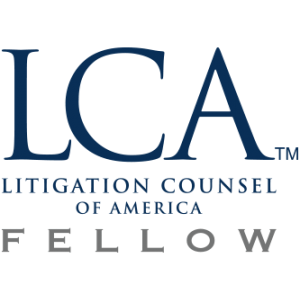Death and Taxes – and Cliffs? : New York’s Estate Tax Exemption and the Financial “Cliff” and “Slide” for the Unwary
New York’s current estate tax law contains “cliffs” and “slides” which can have a significant tax impact on your estate, but there are mechanisms to avoid your estate having to pay the State of New York significant amounts that otherwise should go to your heirs. A periodic evaluation of your estate plan by one of our lawyers can’t help you avoid death, but can help you avoid that other certainty in life: taxes.
On April 1, 2014, the New York State Assembly changed the State’s estate tax exemption rate. The estate tax exemption is the amount below which no estate taxes are owed. For individuals dying between April 1, 2015 and March 31, 2016, the New York exemption amount is $3,125,000, and the recent changes to the law increase the exemption amount over the next few years until it reaches the Federal estate tax exemption amount. In effect, within the next five years, the New York estate tax exemption amount is to “catch up” to the Federal estate tax exemption amount, ultimately reaching the Federal projection of $5,900,000 by January 1, 2019. This means that, by 2019, a New York resident-decedent, through his estate, may transfer this fairly substantial amount to his heirs free from the estate having to pay taxes – a plus for most heirs.
Yet lurking just beyond this seemingly positive law is the financial “slide,” and even worse, the “cliff,” requiring estates valued in excess of the permitted exemption amount to pay the full New York state estate tax on the entire amount from “dollar one” (i.e., not taxed only on the amount in excess of the exemption like the Federal law). Simply stated, if a New York resident’s estate is valued over the permitted exemption, the estate must pay New York state tax on the entire value of the estate, not just on that part of the estate over the exemption amount, a tax expense that the estate pays, costing the heirs what can amount to hundreds of thousands of dollars.
Recent Estate Tax History
Both the Federal government and the State of New York can tax the transfer of a deceased person’s estate to an heir, which is known as the “estate tax.” Heirs do not pay taxes on what they receive from an estate since there is no “inheritance tax,” but a deceased person’s estate can be taxed. Estates valued under a certain amount, discussed below, are exempted from tax. Between 2000 and 2014, a New York state resident-decedent could only transfer $1,000,000 to their descendants free from New York’s estate tax, which, at its highest, can be 16%. In contrast, during the same period, the Federal estate tax exemption amount was gradually increasing: $1,500,000 (2004-2005), $2,000,000 (2006-2008), $3,500,000 (2009), $5,000,000 (2010-2011), $5,250,000 (2013), and $5,340,000 (2014). Between 2000 and 2014, that growing “gap” between the New York state exemption and Federal exemption rates prompted many wealthier New York state residents (i.e., those with estates in excess of $1,000,000) to move to more estate tax friendly states during their twilight years, or to a state similarly on par with the growing Federal exemption. Currently, in 2015, the Federal estate tax exemption is $5,430,000. To keep in sync with the Federal law (and, perhaps, to keep its wealthier residents from fleeing the State), the New York Assembly enacted a yearly gradual increase to its estate tax exemption amount so that it will eventually match the Federal exemption amount by 2019. The chart below shows how the New York State exemption amount will incrementally increase until it matches the Federal exemption amount:
But, there are problems in New York, which imposes state taxes on an estate whose value is above the exemption amount. New York has what is known as a “cliff” and also what is known as a “slide.” (The New York estate tax rates range from 3.06% for taxable estates not over $500,000, to a top marginal rate of $1,082,800 plus 16% of the excess over that amount for estates valued over $10,100,000.).
The “Cliff” – Estates Valued Over 105% of the Basic Exclusion Amount or Permitted Exemption
If the value of an estate is over 105% of the permitted exemption, then the estate must pay taxes on the full value of the estate, not just the amount over the applicable exemption. This is generally known as the “financial cliff,” i.e., an estate will not pay taxes unless it reaches that precipice, but once it reaches the precipice and has a value of over 105% of the applicable exemption, it pays taxes on the full value of the estate, from “dollar one.” For example, five percent of New York’s current exemption amount of $3,125,000 (April 1, 2015-March 31, 2016 period of death) is $156,250. If an estate is valued at $3,125,000 or under, the estate will owe $0. But if the estate is worth $3,281,250.01 ($3,125,000 + $156,250 + 1 cent) (just one cent more than 105% of the exemption amount), the estate will owe taxes on its full value from “dollar one.”
The Financial “Slide” – Estates Valued between 100% and 105% of the Basic Exclusion Amount or Permitted Exemption
While not a “cliff,” an estate valued between 100% and 105% of the permitted exemption still presents a significant downhill “slide” plummeting into the tax chasm. In calculating the taxable amount in such cases, the math becomes more complicated and an estate will still have to pay taxes pursuant to a convoluted computation, which, in essence, will be the normal tax amount subtracted by the “applicable credit” as computed pursuant to a formula set forth in the law. While not subject to the “cliff,” an estate valued between 100% and 105% of the permitted exemption may still have a significant tax liability.
Conclusion
Proper estate planning can help to avoid the “cliff” and the “slide.” For married couples, the tax implications are more important when the second spouse dies, because New York State, like the Federal government, allows an unlimited marital deduction, meaning that the first spouse to die (let’s assume the husband dies first) can leave his entire estate to his surviving spouse, which reduces the value of the his estate to $0, thus not requiring any estate taxes to be paid by his estate. The problem becomes that the estate of the second spouse to die (the wife) will contain her assets plus what was passed to her when her husband died, potentially pushing the value of her estate over the applicable exemption amount. Thus, as is typical, when the children of the married couple inherit after the second parent (the wife) dies, if her estate is over the applicable exemption amount, it will have to pay estate taxes, and the children will inherit less.
This can be avoided by several mechanisms, including creating what is known as a “Credit Shelter Trust” in your will. Generally speaking, a Credit Shelter Trust is created when the first spouse (the husband) dies, by way of his surviving wife disclaiming an amount of money that, upon her death, would push her estate over the exemption. A disclaimer is a process in which the surviving spouse refuses to accept part of the deceased spouse’s estate, which amount is then transferred to a Credit Shelter Trust for the benefit of the wife during her lifetime, and which is then usually distributed to the children when she dies. The disclaimed money that is part of the Credit Shelter Trust is not considered part of the wife’s estate, thereby keeping the value of her estate below the exemption amount, thus avoiding estate taxes.
Many practitioners have shied away from Credit Shelter Trusts due to the advent of the “Deceased Spouse Unused Exemption.” This is a creature of Federal tax law, and allows a spouse to “port” (or transfer) his or her unused exemption to his or her surviving spouse. So, for example, if the first spouse to die (the husband) leaves his entire estate to his surviving wife, the value of his estate (for Federal estate tax purposes) is reduced to $0 by way of the unlimited marital deduction, and his estate e does not need to use his Federal tax exemption (which is currently $5,430,000). That exemption can then transferred to the surviving wife, so she is allowed the benefit of her own exemption, plus the exemption of her deceased husband which has been transferred to her, thus effectively allowing the wife, as the second spouse to die, to transfer of $10,860,000 to the heirs without paying any Federal estate taxes. But in states such as New York, which have not yet matched the Federal exemption amount, and which do not allow a spouse that does not use his or her exemption to “port” or transfer the unused exemption to the surviving spouse, a simple estate plan that does not include a Credit Shelter Trust may not work: the estate plan must be made to avoid New York State estate taxes as well. Simply stated, a simple estate plan that relies on the Deceased Spouse Unused Exemption may work well to avoid Federal estate taxes, but could result in the surviving spouse’s estate being pushed above the “cliff” or into the “slide” realms, thus exposing the estate to state taxes.


















